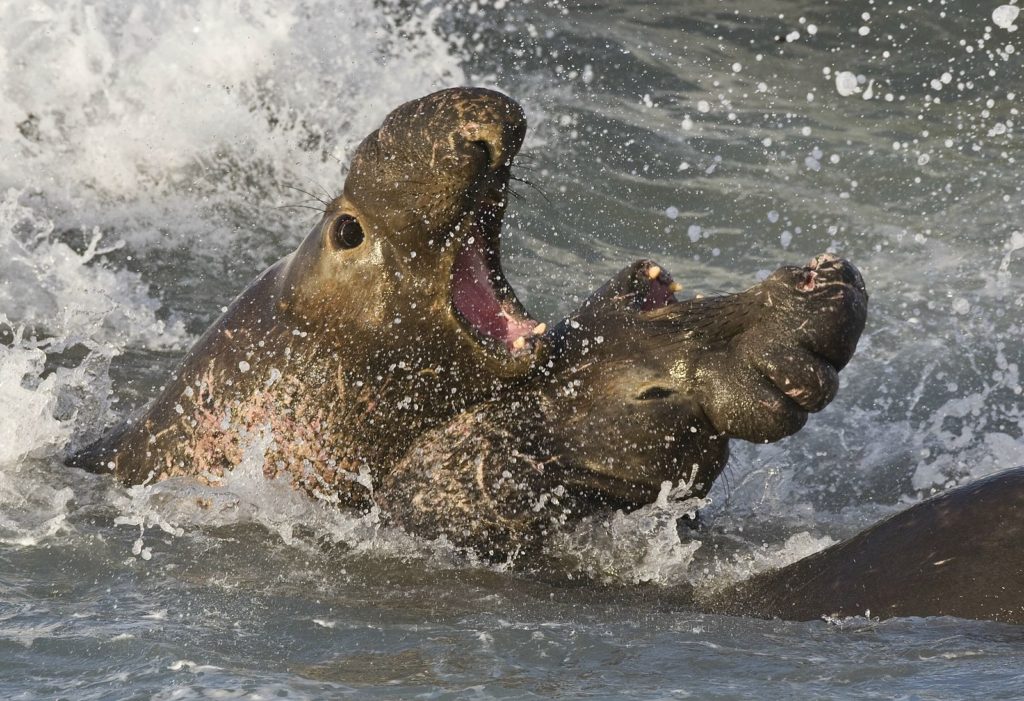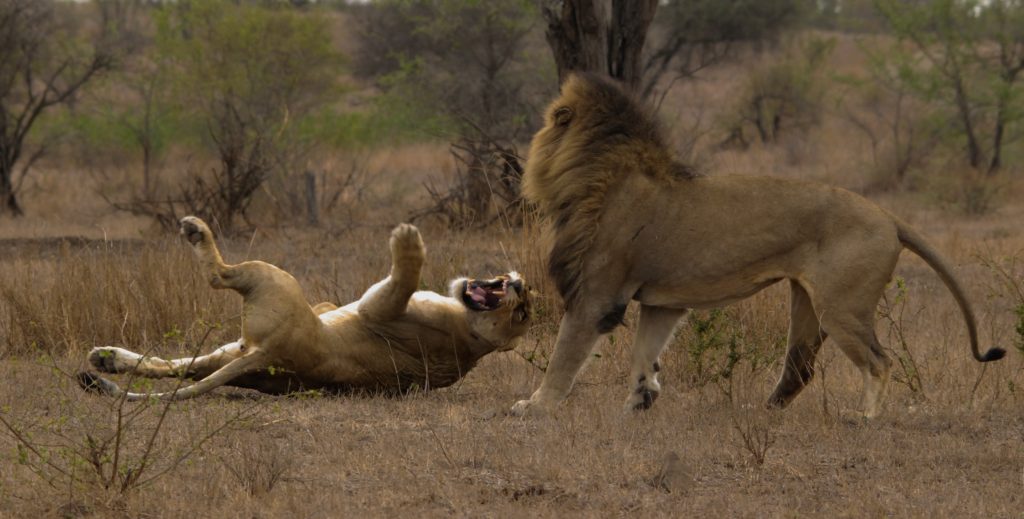Law of the jungle. All images: free public domain. Selected and captioned by the author.
The biggest challenge for curators who operate internationally is to negotiate between the realities of specific locales and a more transnational and cosmopolitan mode. This dilemma is incredibly difficult, yet it offers possibilities to tackle important questions in regard to globalisation’s positive and negative impacts on humanity.
Law of the jungle
All images: free public domain. Selected and captioned by the author.
Globalisation has obvious negative effects, such as homogenisation, which erases cultural difference and destroys established customs and societal structures. Its flip side is isolationism, and the concomitant rise of new forms of nationalism that want to preserve, at any cost, these exact (yet often wholly manufactured) cultural particularities by shutting out any form of otherness. Donald Trump’s deeply xenophobic proposal to build a wall at the U.S.-Mexico border is a crude and ridiculous example of this ideology. Yet nationalism is on the upswing, and with it a resurgence of authoritarianism.
The United States is only the tip of the iceberg when it comes to the emergence (or steady maintenance) of despotic, undemocratic regimes. Russia, Syria, Saudi Arabia, Turkey, India, Hungary, Myanmar, China, Venezuela, Thailand, the Philippines, and now Brazil are mired in extreme nationalism, ethno-religious ‘purification,’ a total disregard for civil rights and an extension of governmental powers not seen since the Cold War.
No matter how much these governments beat their anti-multicultural drums and oppose a cosmopolitan outlook, globalisation is an irreversible process. Ironically, the corporate elites of many of these countries benefit from global trade and cheap outsourced labour to citizenry they are committed to shutting out. The ongoing refugee ‘crisis’ in Europe demonstrates that isolationism can only resist for so long; it is ultimately impossible to keep borders shut, regardless of the height of the wall or the number of troops dispatched.
There is value in resisting homogenisation and keeping cultural particularities alive, yet it is clear that isolationism is not the answer. The solution is coexistence – a way of life that does not reject the other but expresses curiosity and openness to learning from them, in the hopes of enriching one’s own culture. I would even propose something that might initially sound extreme, but that seems to me to be the only viable solution: the complete abolition of the nation-state, as both concept and form of government, and thus of the current geopolitical system.
Only a drastic change in the course of global politics can tackle the grave problems confronting humanity at this point in history: mass migration, social inequality, a profit- oriented relation to resources, declining civil rights and ecological disaster, all leading to the end of humanity as a whole.

The daily grind
The daily grind
These are only a few (admittedly disorderly) thoughts that guide my work as an internationally operating curator. Each biennial must take the struggle between the local and the global into consideration, in a way that is appropriate for the context. No manual can tell a curator how to work their way through this web of deeply troubling complexities. Many of us bring to this job very different professional and personal trajectories, with often divergent, even opposing, ideas of what it means to be a curator. Someone might ask (albeit naively): “What does curating have to do with politics, given that the traditional responsibilities of a curator are the study, interpretation, display and conservation of art?” For me, the enormity of today’s social and political tragedies makes it impossible not to engage with, reflect on and do whatever I can to stop the apocalypse. And since my particular field of operations is curating, that is where I direct my energies.
Biennials can be excellent platforms for critically engaging with contemporary world politics. Given that it is a coming together of multiple, diverse voices, a biennial can offer scenarios for encouraging a visitor to think more profoundly and honestly about their position in the inescapable web of global political disorder. However, in a practical sense, it is hard for an outside curator, likely hired about a year before an opening, to gain a deep, legitimate understanding of the cultural and political distinctiveness of the place in which they are to stage their exhibition. It is nearly impossible to develop a heavily context- specific biennial in a place like Istanbul, São Paulo or Moscow, with their tumultuous and rich histories, while also saying something specific about their contemporary global entanglements. To dive into a local situation while attempting to draw out its connections to worldwide developments is almost too much to take on.

Rise to the top
Rise to the top
The proliferation of the biennial format has led to an endless repetition of a more or less standardised curatorial framework, namely, a large-scale exhibition presenting the latest and greatest works from around the world. However, a number of biennials have thankfully begun to realise that deeper artistic and curatorial commitment as well as a sense of urgency are required. These biennials have started to articulate more specific missions, which usually emerge from the histories and current realities of their locales.
Yet it is rarely up to the artists or the curators of a large-scale international exhibition to drive change in the rules of the game. More often than not, organisers and funders have their own objectives for staging these huge art events, from fostering cultural tourism (bringing attention to the local and national art communities) to city boosterism and the advancement of the local economy.
How can curators manoeuvre in such minefields of diverse demands and sometimes contradictory expectations? There is no formula. Each situation calls for its own unique solution and requires enormous commitment on the part of the artists and curators involved – commitment to research, to conversations, to openness and listening, to understanding what goes on beyond one’s own, often limited sphere of operation. I do not want to romanticise any of this; it is a daunting and often thankless task, no matter how carefully and sensitively one approaches it.
Above all, one must have a strong and singular vision for the exhibition and its related activities. One must aspire to impact everyone taking part in the endeavour, from the artists and curators to the spectators. There are only three options: shut out politics entirely and focus on art alone; find some unsatisfactory middle ground in which artists make more representations of the geopolitical system; or fundamentally change the rules of the game, rethink everything and get serious about saving this world from implosion.
ABOUT THE AUTHOR
Jens Hoffmann is an educator, editor, writer and exhibition maker based in New York, Stockholm and Milan.



